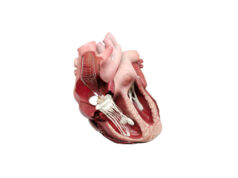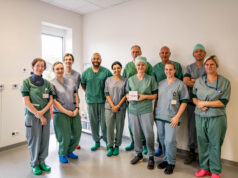4Tech’s transcatheter tricuspid valve repair device (TriCinch) has been used for the first time to treat patient with tricuspid regurgitation. The procedure was performed without transoesophageal echocardiography (TEE) or general anaesthesia at the San Raffaele Hospital (Milan, Italy), took less than one hour and allowed substantial reduction of tricuspid regurgitation.
According to a press release, the procedure was performed as part of ongoing feasibility study of TriCinch that is being conducted at San Raffaele Hospital and in other sites in Italy and in Europe. The investigators for the study at San Raffaele Hospital include Azeem Latib (senior interventional cardiologist), Eustachio Agricola (senior echocardiographist), and Paolo Denti (hybrid cardiovascular surgeon).
Agricola comments: “Our patient was at very high risk for surgical treatment, and she was referred to us by a cardiac surgeon. Equally critical, she was unable to undergo TOE because of an oesophageal diverticulum and thus there were extremely limited options for offering her any treatment.”
Latib adds: “Fortunately, the extensive experience of the San Raffaele team with transcatheter treatment of the tricuspid valve and cardiac imaging allowed for the treatment. The successful treatment of this case opens up new options for minimally invasive treatment of patients with functional tricuspid regurgitation.”
Today’s standard of care for tricuspid regurgitation is medical management. Surgical intervention is very high-risk. In-hospital death post-cardiac surgery for isolated tricuspid regurgitation can be as high as 37%. Unfortunately, tricuspid regurgitation patients tend to be non-compliant with their medications. Thus, tricuspid regurgitation and related complications induce substantial healthcare spending due to frequent re-hospitalisations. Furthermore, it leads to chronic renal failure and end-stage dialysis. The combination of these negative outcomes results in a significant unmet need for an interventional cardiology solution.










